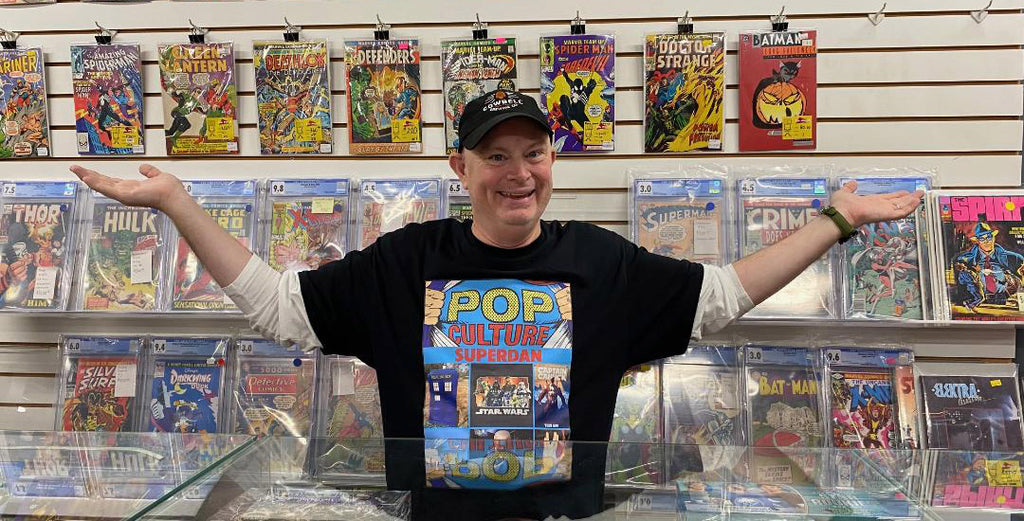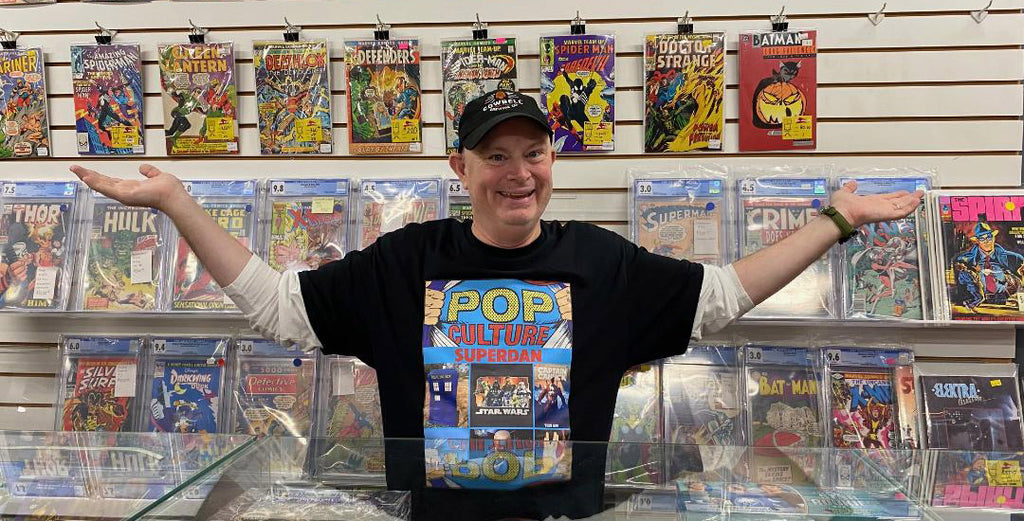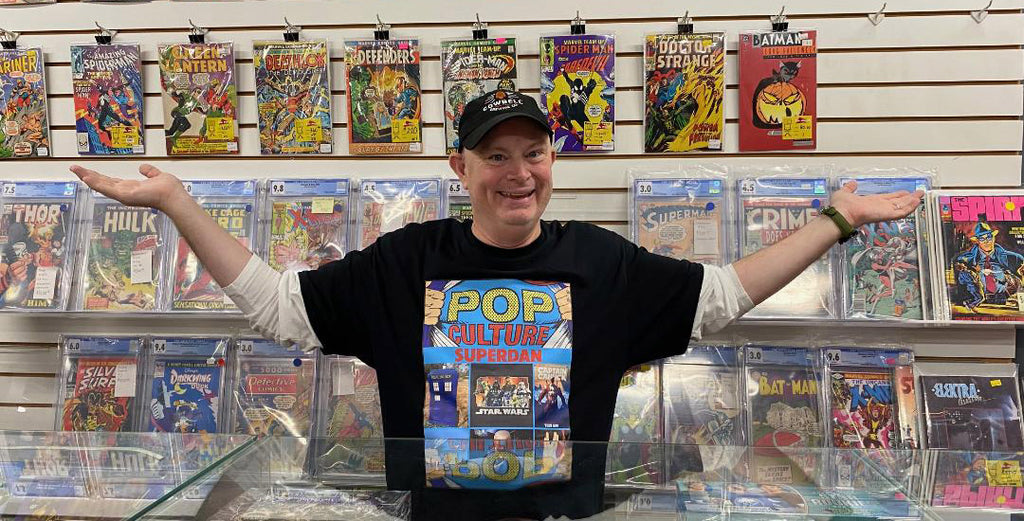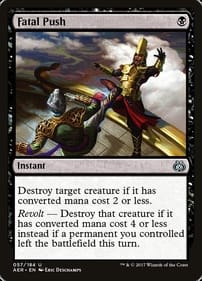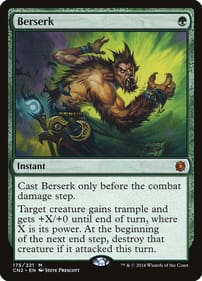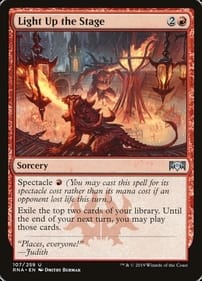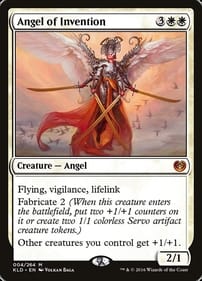A Chilling Admission from Your L.A. Mood Comic Correspondent
The views expressed in this column are those of the writer alone and should not be attributed to L. A. Mood or its employees. By Dan Brown I’ve got a horrible confession to make. You’re going to think less of me. But I can’t go on as L.A. Mood’s comic columnist without coming clean. If you’ve read any of my previous columns this year, you’ll know that I’m a fan of Marvel Comics from way back. (I always found D.C. heroes to be emotionally constipated, which made them seem less real and compelling to my younger self, a topic for a future column.) However, here’s the thing: As much as I’ve loved Marvel since the 1970s, I don’t feel much for the brand’s marquee character. That’s right. I don’t like Spider-Man. I can hear you gasping. I have to be honest with you, my fellow comic fans: I feel little for everyone’s favourite web-slinger, even though he’s been Marvel’s mainstay attraction for decades. It’s not that I actively dislike Peter Parker’s alter ego, it’s just that I’ve never gone out of my way to seek out the many books that feature him. How many different Spider-Man titles are there these days? About 5,000? That’s 5,000 I don’t have on my monthly pull list. I realize this is like a DC fan admitting they never liked Superman. Startling, but true. I guess I just never formed a bond with Spidey the way I did with characters like the Thing or Wolverine or the members of Alpha Flight. I started making mine Marvel in the mid-1970s. As the years went on, I fell in love with the Fantastic Four, Iron Fist, the new team of X-Men, Captain America, Iron Man, and others. Sure, I was aware of Spider-Man. Heck, one of his girlfriends had been killed by a baddie. Back then, characters died and stayed dead, so that was remarkable. And I knew a bit about supporting characters like the Punisher, who shot rubber bullets at his foes. That was cool. But in my childhood home in Poplar Hill, I wasn’t the one reading Spider-Man’s adventures. It was my four-years-older brother who brought Marvel Team-Up home off the spinner rack. Every month, the webhead partnered with a different character, usually one Marvel was hoping to promote to head up their own title. And I will admit, in the hands of artist John Byrne, Spidey could do some thrilling stuff. In one of those Team-Ups, Spidey runs upside-down through a hallway on the ceiling – it was such a brilliant use of a comic panel to show what the character is capable of. Yet it still wasn’t enough to fire my imagination. I drew a few pictures of Spider-Man in my school notebooks, but he was not the focus of my attention the way others were. I was a sucker for such anti-heroes as Deathlok, the warrior cyborg from the future. How could the wall-crawler compete? Somewhere along the way I even picked up a mini-digest of the first six or seven appearances of Spider-Man from the 1960s. Even though I loved that otherworldly Steve Ditko art and dug the crazy villains, it didn’t make me a regular reader. Were the modern movies any different? Nope. I went to see the three Tobey Maguire films, out of a sense of duty more than anything else. Maguire’s Spidey seemed just as . . . vanilla . . . as the one I remember from the comic books, so I gave up on him as a motion-picture character. Nor am I going to rain on anybody else’s parade. Don’t worry. If you’re a fan of Spider-Man, good for you. I’m just glad people are still reading comics and geeking out over superheroes in the year 2023. And hey, I’m a weird guy who likes weird things, so likely I’m the odd man out here. The fault is probably mine for not making a bigger spot in my heart for Aunt May’s favourite nephew. Are there any popular characters you never developed an affection for, even though they were bestsellers? I’d love to hear all about it in the comment box below. I promise I won’t think any differently of you! Dan Brown has covered pop culture for more than 30 years as a journalist and also moderates L.A. Mood’s monthly graphic-novel group.
The Next Big Marvel Fad Is Here
By Dan BrownI’m not one to say comics were better when I was a boy – they weren’t better, they were just different.That said, I do miss the desperate attempts by the editors at Marvel Comics to cash in on the latest trend, whether it be kung fu or black power or disco music.I miss the slapdash efforts to tap into the collective consciousness from the folks at the House of Ideas whenever the Next Big Thing came along in the 1970s and early 1980s.You don’t see that much in today’s comics.What I’m talking about are the weird, wonderful books like Marvel Premiere No. 50, which came out in 1979 and featured shock rocker Alice Cooper.That’s right: Along with Captain America, Spider-Man and the rest, the then-edgy Alice Cooper was once a Marvel protagonist.You can imagine the wishful thinking: Cooper was selling a pile of albums and had generated a lot of buzz with his at-the-time outrageous stage shows, so the brain trust running the firm likely figured gangbuster sales would follow if they slapped Alice’s name on a comic. That may also be why comics and characters prompted by popular trends were mostly half-ass affairs.The creative team had to get them onto stands quickly, since by the time retailers reported sales figures back, the newest mania could be over.Nor was Cooper the first musician to appear in the pages of a Marvel adventure: Gene Simmons and the guys from KISS likewise showed up in the magazine-size publication Marvel Super Special No. 1, which landed in 1977.But the ultimate example of cashing in on a musical craze had to be Dazzler, the mutant who had the powers of . . . a disco ball. She first appeared in 1980’s Uncanny X-Men No. 130. You won’t be surprised to learn the mutant superhero team discovered her in a chic New York nightclub a la Studio 54. Having her debut in the pages of one of the brand’s most popular titles didn’t hurt, and the character went on to have a comic of her own for five years, thus outliving the music genre that spawned her.If it was hot, Marvel tried to jump on it. When martial-arts films featuring Bruce Lee drew audiences to movie theatres, the company responded with heroes Shang-Chi and Iron Fist, who chopped with their hands and kicked with their feet. Giving a new character the unsubtle name Power Man, as well as promoting Black Panther to headline his own series, were part of Marvel’s play for black readers. With real-life daredevil Evel Knevel generating headlines in the 1970s, the storied company answered with a stuntman of their own, the Human Fly. Shogun Warriors was aimed at fans of giant Japanese robots.When the Marvel team couldn’t secure the rights to The Lord of the Rings, they created their own fantasy world in Warriors of the Shadow Realm. Heck, Spider-Man even joined forces with the original cast of Saturday Night Live in Marvel Team-Up No. 74 in 1978. And it got sillier. In 1982, the latest to become a Marvel superhero was . . . the Pope. John Paul II made his comic debut in a biographical issue called The life of Pope John Paul II. “The entire story!” the cover blared. “From his childhood in Poland to the assassination attempt!” I’m sure kids everywhere were thrilled.Of course, if you do enough of these fad-based comics, eventually one will catch fire. And that’s just what happened in the mid-1970s when Marvel got the rights to a virtually unknown sci-fi property called Star Wars.It was arguably the smartest move in Marvel history, because the title became a massive seller. There were millions upon millions of us hungering for Star Wars content, of which there was little apart from Alan Dean Foster’s Splinter of the Mind’s Eye novel and Brian Daley’s Han Solo trilogy. Smarter people than me have argued how, without the Star Wars licence, the company might not have survived into the 1980s.I guess you could say there is one fad that Marvel editors have been trying to milk for the last 20 years, which is the popularity of the movies and TV shows based on Marvel characters. They’ve taken a hero like Samuel L. Jackon’s Nick Fury from the movies and projected him into their comics, erasing the original cigar-chomping Second World War stalwart.But apart from driving up the price of back issues, I’m not sure big-screen adaptations have done much for the sales of the comics themselves, which is both odd and sad.Dan Brown has covered pop culture for more than 30 years as a journalist and also moderates L.A. Mood’s monthly graphic-novel group.
Seth Remembers His Teen Years, or Does He?
By Dan BrownWith his latest release, Palookaville 24, Guelph cartoonist Seth has moved into full-on Alice Munro territory. And it’s delightful.What do I mean by comparing the graphic novelist to the best damn short-story writer on the planet?I mean, if it wasn’t before, it’s official now: The central preoccupation of Seth’s work is how his memory works, and doesn’t.It was already clear, in books like Clyde Fans and George Sprott, Seth was obsessed with the past. Much of the artist/writer’s work is set in a sort of 1950s Canada that we all recognize yet can’t remember distinctly. Nostalgia may or may not be the impediment. His main goal now appears to be pointing out the inadequacies of human memory as a stable platform for telling stories. So when I read the latest instalment of Nothing Lasts in the new Palookaville, I instantly thought of Nobel Prize winner Munro. Munro’s stories have been lauded for decades for their realism, but if you pay careful attention to the words she uses, you'll find Munro, a Wingham native and long-time Clinton resident, is often not describing what happens to her characters, but what could have happened. There’s a big difference. (Digression: Ajay Heble, my M.A. thesis advisor, wrote a whole book on this “reservoir of meaning,” as he calls it, in her work. And yeah, I did my thesis on Alice Munro. I’m a nerd.)So in the new book Seth will describe, in great detail, the daily routine of a summer job he had in the 1970s using the diction of uncertainty. He will lay out his memories for the reader and then say, “I think,” meaning he’s not sure how much to trust the vivid scene he has just described. “I’m not sure,” he’ll say in other passages. These seemingly fondly recalled moments could have happened the way he remembers. But did they?The comic creator then goes an additional step, and asks, “What DO I recall of those summers?” and revises his story. Nor can he explain why certain details stick out and others are a blank in his mind.For example, while detailing his summer job he reveals during that season he was reading a movie novelization. He never says which movie. “Was it really like this?” he writes at another point of his own narrative, probing his recollections of what seems like an eternal 1970s summer day.Seth goes even deeper, asking if a memory can die of neglect. The more he tries to nail down the images and feelings in his mind, the more they elude him. At one point he projects backwards, putting his adult self in a scene from his younger years. Then he projects forward to his future gravestone.All that, plus the chapter ends with a cliff hanger!Palookaville 24 also includes some sketchbook exercises Seth assigned himself and a film on DVD by Luc Chamberland of a suitcase theatre play that Seth performed using puppets.Chamberland is the same filmmaker behind Seth’s Dominion, the superlative National Film Board of Canada documentary about the cartoonist which animates passages from Seth’s previous work to great effect.(Bonus digression: Both Seth and Munro are products of Southwestern Ontario. I know everybody has to be from somewhere, but is there some kind of symmetry to that? Are people in this corner of Canada more obsessed with the images in their minds of the lives they have lived than other Canadians? It’s an honest question.) Dan Brown has covered pop culture for 30 years as a journalist and also moderates L.A. Mood’s monthly graphic-novel group.
Unproductive Cartoonist Joe Matt Preferred not to be Prolific
By Dan BrownCartoonist Joe Matt died last month at age 60. He was at his drawing table when the (unconfirmed) heart attack took him, but Matt’s friend Seth pointed out in an online tribute he likely wasn’t creating comics.Which is Matt’s tragedy. He will go down in comics history as someone who could have done more, but chose not to. The truth is, after his 14-issue run on Peepshow ended in 2006, Matt found other things to do apart from publishing his highly personal comics.That’s why, in my mind, I classify Matt alongside Bob Burden, Paul Chadwick, Michael Golden and David Mazzuchelli. They are all comic creators who, for whatever reason, aren’t consistently productive. As much as I enjoy their work, which is a lot, none of them are cursed with the gift of being prolific.It doesn’t mean the comics Matt made in his brief life are of poor quality. It just means, like many other comic fans, I have an itch that will never be scratched because with his sudden passing, the hope that Matt would ever draw and write another story disappears(None of this applies and all bets are off if some publisher finds a treasure trove of material he worked on, but never got published during his lifetime. I can only hope.)Matt came to prominence alongside his cartoonist friends Seth and Chester Brown, who all hung out in Toronto in the 1990s. Matt, an American, was in Canada illegally and eventually ended up settling in Los Angeles. A rumoured HBO series based on his comics never materialized.Matt was known for autobiographical stories that were embarrassing in the extreme. He specialized in detailing his own quirks and obsessions, such as spending a good chunk of every day masturbating to pornographic videos. He was kind of like comedian Larry David in that the essence of his work was describing the price he paid for being himself.In the coverage of his death, there have been hints Matt had been dealing with some kind of creative block. (I don’t believe in writer’s block, but that’s a subject for another column.) There were also indications his perfectionism got in the way.One way to measure his output would be to compare him to Seth and Brown, also autobiographical creators. What jumps out when you look at their bibliographies is how Seth, for instance, balances the need to be creative with the need to be perfect, and has produced a long list of books and other projects. Or you could compare him to a comics legend like Jack Kirby, who enrolled in New York’s prestigious Pratt Institute for illustrators when he was 14 years old. He ended up dropping out.“I wasn’t the kind of student that Pratt was looking for. They wanted patient people who would work on something forever. I didn’t want to work on any project forever. I intended to get things done,” Kirby would say later in his life.The consequence is that Kirby’s comics, all these decades later, are still being reprinted and sold to new generations of comic lovers. Meanwhile, Matt’s anthologies have already gone out of print.A modern example would be Southwestern Ontario’s own Jeff Lemire, who is always working on multiple books, never seeming to be at a loss for inspiration or motivation. He once credited his prolific nature to the work ethic he developed being raised on a farm.For whatever reason, Joe Matt wasn’t interested in living like that. The sad fact is, he will go down in comics history as a footnote. He will forever be “the other guy” of the Toronto Three.Dan Brown has covered pop culture for 30 years as a journalist and also moderates L.A. Mood’s monthly graphic-novel group.
Back to School for Gifted Children
By Dan BrownIt’s early September, the perfect time for a back-to-school column. And the subject of this one is schools for gifted children, a recurring trope in pop culture I first came across in the pages of Marvel Comics in the late 1970s.At these places of learning, the students can be mutants or sorcerers or vampires or weirdos. The private-school setting is the common thread that ties them all together, and it’s a plot device that’s been so widely used, it’s become a narrative crutch that deserves to be parodied.The most recent example I noticed comes from the Netflix series Wednesday, which dropped last November. Although I love the Addams Family characters, Wednesday wasn’t really my thing. But my wife convinced me to watch long enough for me realize, “Hey, Nevermore Academy is the latest in a long line of Gothic boarding schools where things aren’t as they seem and perhaps monsters roam the halls!”(Fun fact: The original Addams Family television show was inspired by a single-panel recurring cartoon in The New Yorker magazine.)The first one of these schools I ever encountered was Professor Xavier’s School for Gifted Children. Maybe you can relate.I began reading The Uncanny X-Men in the early days of John Byrne’s run on the title as penciller, and I loved the characters so much I eventually worked my way backwards to the debut issue of the irregularly published title.Back in 1963, Jack Kirby was the first artist to depict this particular school, which was home to Cyclops, Marvel Girl, Angel, Beast, Iceman and, of course, Professor Charles Xavier (you knew he had mind powers because he was bald).Over the years, the building in New York’s Westchester County has been known by many names, like the X-Mansion, the Xavier Institute for Higher Learning, and the Xavier School for Gifted Youngsters. It has been destroyed, become sentient, been transported to another dimension, and lately rendered irrelevant by the mass relocation of the Homo Superior race to Krakoa. I think that’s a shame. It was in the aptly named Danger Room that Xavier’s pupils honed their mutant powers, safe from the world that fears and hates them.The most well-known academy for gifted children is, of course, the Hogwarts School of Witchcraft and Wizardry, made famous by J.K. Rowling and first appearing in her 1997 novel Harry Potter and the Philosopher’s Stone.We’ve now arrived at the point where I admit I don’t have a fully fleshed-out theory of why this trope resonates so strongly with the members of so many different fandoms. My brightest idea is simply going to school is a common experience we all share. That might account for why schools for the gifted are so prevalent in pop culture. But beyond that, your guess is as good as mine. Is the trend being driven by a fascination on the part of those who attended public schools with how things work at boarding schools? A fetish for things British? Laziness on the part of writers?Other examples include the Salvatore School for the Young & Gifted from The Vampire Diaries, the Umbrella Academy, and the superhero school in the clouds from the underrated 2005 flick Sky High.But I’ve saved the best for last. I’m talking about Canadian comic creator Jilliam Tamaki’s SuperMutant Magic Academy, which is a place where immortals, shapeshifters, braniacs, closeted lesbians and a girl with the head of a lizard go to classes.The 2015 graphic novel takes the Hogwarts and Xavier School premise seriously: What if teenagers with powers actually had to go to high school together? How would they deal with the angst of being teens? How would they cope with boredom? Would they use their special abilities for good? The result is a funny and touching portrait of a group of students and teachers who are really no different from you or me. I give the book an A+.Dan Brown has covered pop culture for 30 years as a journalist and also moderates L.A. Mood’s monthly graphic-novel group.
Comic Book Sale Caused by Superhero Discountman Appearance
Every once in a while, in the vast universe of comics, a new hero emerges—one that might not fit the traditional mold but resonates with fans nonetheless. At L.A. Mood Comics and Games, such a hero has risen: Discountman! Who Exactly is Discountman? Legends often have humble beginnings. Our enigmatic hero, Discountman, might not have come from a distant planet or been bitten by a mystical creature, but his power is one every comic aficionado cherishes: the power of unbeatable savings. Known in the inner circles as Gord, this unassuming figure is a testament that not all heroes wear capes. This hero, with his gentle demeanor, creates a legacy by making comic dreams more accessible. The Comic World's Best-Kept Secret Every hero has their story. While Discountman's real identity remains shrouded in mystery, what we do know is that his appearances are rare, usually during spectacular comic book sales, and always bring joy to the comic community. He's the unsung sentinel watching over budgets while ensuring fans don't miss out on their favorite reads. Great Comic Discounts From Friday, August 18th to Saturday, September 2nd, Discountman’s magic is palpable across L.A. Mood Comics and Games: 25% off on all wall comics and premium books: Whether you're a seasoned collector or a newcomer to the comic world, this range promises to introduce you to stories that will be cherished for ages, waiting for you at a fraction of the price. 50% off all back issues in white boxes: Thousands of tales await in shaped universes, legendary characters. Now is the time to complete those missing series or discover a new favorite at half the cost! These are perfect for those who love diving deep into the comic world's history and discovering hidden gems. A huge selection of Indie, Marvel, and D.C. comics await. Journey Through L.A. Mood Comics and Games Situated inside 100 Kellogg Lane in London, our store isn't just a commercial space; it’s a journey through time and imagination. With walls adorned by vibrant artwork and tales of heroism, betrayal, love, and camaraderie, L.A. Mood is a testament to the artistry and narrative prowess of comic creators. Digital vs. Tangible: The Unbeatable Charm of Physical Comics In an age of digital consumption, there’s an irreplaceable charm in holding a tangible paper comic. Feeling its weight, smelling the print, and being able to physically turn a page adds layers to the reading experience. This sale, an in-store exclusive, champions this very charm. A Clarion Call to Comic Lovers Heroes, anti-heroes, sidekicks, and even villains—here’s your chance to rally! Step into a realm where each corner holds tales of valor, each shelf introduces you to new worlds, and Discountman ensures your adventure doesn't burn a hole in your wallet. Conclusion Every epoch has its heroes. While the comic world is filled with the likes of Superman, Wonder Woman, Thor, Batman, Wolverine, and Spider-Man, at L.A. Mood Comics and Games, Discountman reigns supreme. As pages turn and stories unfold, remember that this hero ensures you dive deep without financial constraints. Embark on this journey with us, and let's celebrate the legacy of comics together.



